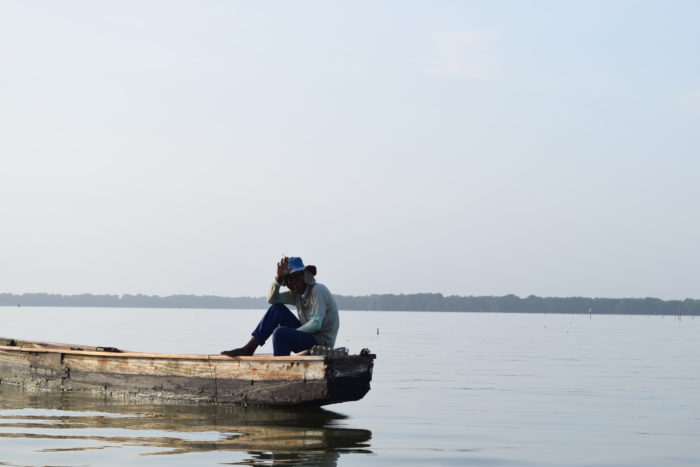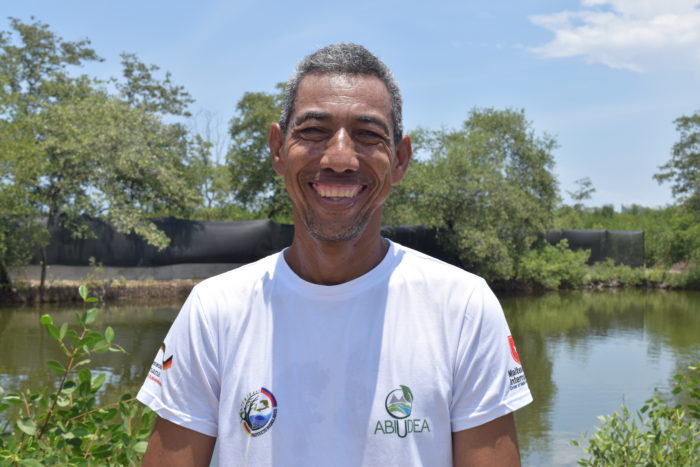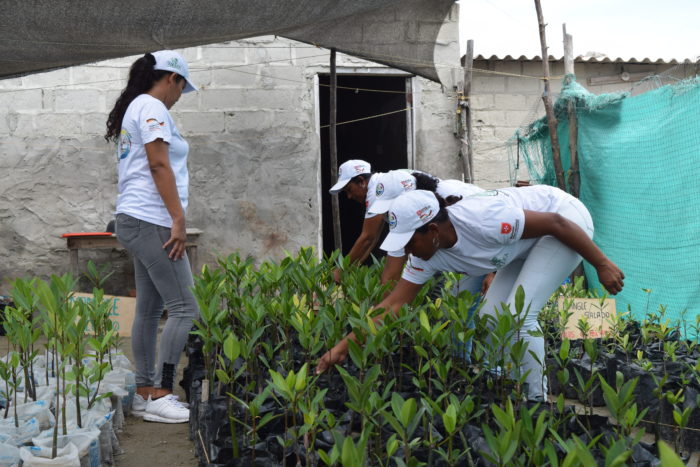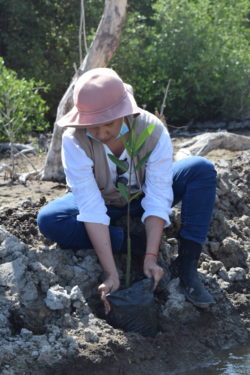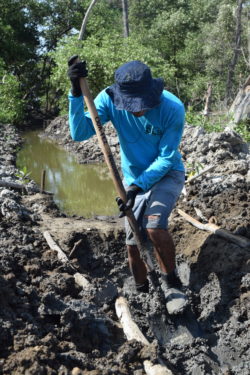Americas
Colombia – El Magdalena: Biodiversity, Community Empowerment, and Sustainable Development
Driving towards the department of El Magdalena from La Guajira, the arid and barren landscape of Colombia’s desert region fades, giving way to a lush and verdant topography. Leafy trees – not shrubs – along with rivers, marshlands, and lagoons, dot the scenery, crowned by the majestic snowy peaks of the Sierra Nevada. The Magdalena River was the backdrop of Garcia Marquez’s novel Love in the Time of Cholera, and its magic lives on thirty years later.
The Wayuu – the predominant ethnic Indigenous group in La Guajira – are famous for their colorful woven bags, their resilience, and agricultural skills to withstand droughts and hostile environment. In El Magdalena, the Wiwa are the largest ethnic Indigenous group.
Unlike the Wayuu, who have to battle daily with their harsh surroundings, the Wiwa can count on lush vegetation, and have the profound belief that earth is a living being that must be protected at all costs. Cheerful children are grinning and splashing each other in the river, their thrown rocks creating gentle ripples in the crystalline water. The beaming smiles of their mothers give them comfort, the water flickering like glitter give them peace, under the scorching Caribbean sun. The river curves gently, the white peaks of the Sierra Nevada mountains shine in the distance. While nature is benign to man in this region, man-made developments including hydroelectric projects, mining concessions, and urban development have failed to consider the land and needs of Indigenous communities, alienating them from the very soil they revere.
Santa Marta, a busy port with a rich history, is the oldest remaining city in Colombia, and was founded in 1525 by Spanish colonizers. Its colonial architecture and bustling city center blur the memory of the sleepy and arid neighboring department, La Guajira.
This perception of opulence and wealth, however, is only fleeting – look just slightly closer and you’ll see throngs of people surrounding a water tank, desperate for access to a clean water source. The department of El Magdalena has its own struggles, including lack of access to basic services, systemic violence, and widespread displacement. Human rights and environmental activists in the region are at risk of persecution, and some disappearing for good.
Thriving biodiversity and its threats
The Santa Marta district is celebrated for its biodiversity, with national parks, mountains and lagoons. The Cienaga Grande de Santa Marta, about an hour away from the city of Santa Marta, is the main coastal lagoon in Colombia and has been a UNESCO Biosphere Reserve since 2000 and is a Ramsar site.
The convergence of fresh water from the Magdalena River and smaller tributaries flowing down from the Sierra Nevada, merging with the Caribbean salt water has created the perfect ecosystem for one of the country’s most biologically diverse environments. The Cienaga is home to hundreds of species of fish, including the pricey Striped Mojarra and the famous Bocachico. Exotic birds, monkeys and more than 33 species of mammals contribute to the thriving ecosystem. It is also home to the largest mangrove forest on the Colombian Caribbean.
However, fast forward a few decades the Cienaga has experienced massive mortality of mangrove forests and significant decline in fishery resources, all caused by human activity. Farmers needing water for their crops began building channels redirecting the natural flow of water and blocking the River and its tributaries from entering the Cienaga, reducing the flow of fresh water into the lagoon and stopping water from reaching the forest. This, combined with the construction of a highway extending between Cienaga and Barranquilla in the 1950s, has altered the natural flow of marine and fresh waters, causing environmental damage to the mangrove-lagoon ecosystem. This has had disastrous ramifications on the marine biodiversity within the Cienaga and has deteriorated the wetlands, adversely impacting the population of towns which rely on the Cienaga for their livelihoods.
“There used to be more than 500 species of fish, now we only have around 100,” says Jose Luis Garrido Nieve, member of the Asociación de pescadores artesanales amigos de cultivo (CRIAPEZ), a group of fishermen that have been involved in fish farming for the past 23 years in Isla del Rosario, Magdalena. CRIAPEZ was founded in 1997 by fishermen to contribute to the development of their community and improving the quality of the mangrove ecosystem.
When development projects fail to take into account the environmental and social impact it will have on the local economy, it has ripple effects that cannot be ignored. Thousands of hectares of mangroves have disappeared, vulnerable populations who depend on the Cienaga ecosystem for their sustenance have been displaced or are barely surviving, living in extreme poverty, bearing the brunt of decisions they had no part in. Vulnerable populations don’t have access to safe drinking water, their dwellings are built on piles of trash, and their existence is threatened by the rapidly rising coastal erosion, which would otherwise be prevented by a thriving mangrove ecosystem. Entire Indigenous groups risk extermination.
“Collectively we need to renew our commitment to protecting the native ecosystem of the Cienaga. Our communities depend on the Cienaga economically. They depend on its ecosystem for their livelihoods. If the ecosystem ceased to exist, the communities would cease to exist.” Jose Luis Garrido Nieve, founding member of CRIAPEZ
Mangroves: Malteser International Americas planting seeds of hope
Malteser International Americas has worked in northern Colombia since 2014, and has recommitted itself to reviving the vital ecosystems and protecting these vulnerable populations. Development projects are lengthier in nature, and their impacts are less immediately noticeable, but small changes over time have a big impact, and progress is measured in many different ways.
Restoring forests while raising environmental awareness and empowering the local population is our organizations’ focus for this project. We are working in three different locations and with three different target groups to build mangrove nurseries, training and building expertise in environmental conversation, all while restoring mangrove ecosystems. In the town of Tasajera, we are working with 22 single mothers, empowering them to take action to protect their ecosystem, as well as providing them with a source of income and training. Training them will pay dividends, as they will transfer the knowledge to their children and fellow community members and serve as inspiring examples for others to follow. It is what in development is called “the gender multiplier effect” on the community.
The work of restoring the hectares of mangroves entails creating physical water channels to facilitate the flow of water, then monitor water levels to support healthy growth. We are working towards the goal of planting 33,000 seedlings grown in three nurseries, thus rehabilitating 30 hectares of mangrove forest. In May 2022, 5,300 mangroves will be planted.
The benefits are economic but also environmental. Economic because the people here depend on fishing and restoring the mangroves will bring back fish nesting. This will feed the local population and the local economy. Environmentally, it will act as a carbon sink, and we will free up more oxygen. These mangroves capture ten times more carbon than a forest tree. Frank Sarmiento, ABIUDEA
Recycling, ecotourism and a look towards the future
In Isla del Rosario, local ingenuity goes a long way. Our work on environmental awareness includes piloting an innovative solution – informed by local organizations, research institutions, and collectives – to recycle all the waste that is brought from the currents of the lagoon. CRIAPEZ, along with the University of Magdalena and Instituto de Investigaciones Marinas y Costeras (INVEMAR) a research institute focused on marine and coastal ecosystem, have co-created an aquatic bike, instrumental in picking up and cleaning all the waste from the Cienaga. The organization also produces bricks made of 50% plastic, 25% sand and 25% cement. The bricks are extremely light, weighing only 900 grams.
Local entrepreneurs like to dream big. “We have also been brainstorming other ideas, including a floating restaurant!” says Manuel Francisco Lopez Orga, Vice-president of CRIAPEZ. “We will bring visitors on a tour of the mangrove, then offer them refreshments at the floating restaurant. Eventually we could even serve food here. Alvaro – a friend of mine – is a chef and he can cook typical food from the area. It is our dream, but we need more support to realize these ideas”.
Entrepreneurship, innovation, and grit are the words that come to mind when meeting the CRIAPEZ’s founding members. Despite their limited resources, their commitment to preserving the environment in unwavering, as is their willpower to find innovative solutions to their problems. Just like the plants living on the Cienaga can bend and easily adapt to abrupt changes in the ecosystem, its inhabitants are ready to pivot and innovate. They are wary of being called “beneficiaries” – a term often used in humanitarian and development work to designate a person benefitting from an organization’s projects – of the development project.
“We bring ancestral and empirical knowledge, and we are community leaders in the fishing community. Don’t call us beneficiaries, call us allies. We are bringing knowledge and our best efforts to the table!”
All of our development projects at Malteser International Americas adopt a participatory approach, where we always involve local communities to pilot solutions, ensuring our efforts are as sustainable as possible (i.e. the multiplier effect). Development projects that fail to take into account the local community would only be half as effective.
Malteser International Americas will continue to be an ally of local communities, and ensure the populations served live lives of dignity.
The dream of sustainable ecotourism through the use of the mangrove paths is the future. Within this community we have the tools to keep working on this project and my younger relatives are all aware that this is the future! Manuel Francisco Lopez Orga, Vice President of CRIAPEZ

